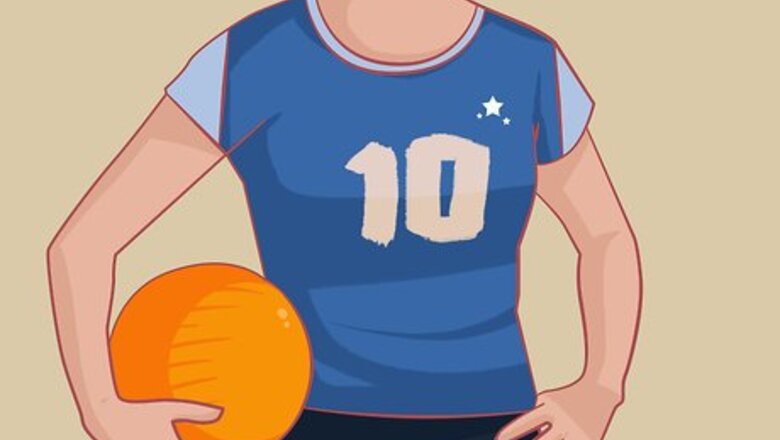
views
Choosing Apparel for Women
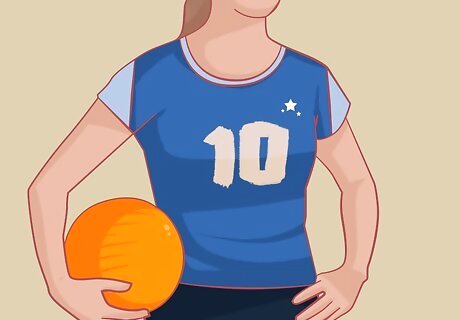
Select a close-fitting shirt. Baggy shirts will hinder your ability to move quickly around the court, so choose something form-fitting. It should be long enough to cover your stomach, but not so long that it hangs down over your thighs. Many women wear tank tops or t-shirts, but you can also wear a long-sleeved workout shirt to protect your forearms from the impact of the ball during passing. Cotton is a popular material for t-shirts, but it absorbs a lot of moisture and doesn’t dry quickly. Try choosing a shirt containing nylon or spandex, both of which help to wick moisture away from your skin.
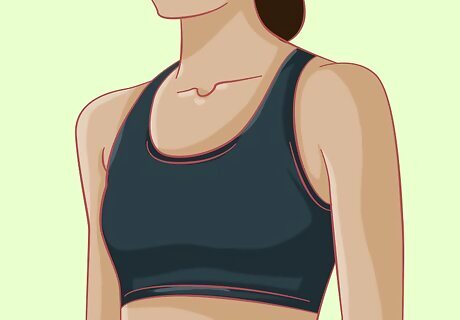
Choose a sports bra. Regular bras with underwire will not offer adequate support for the amount of movement you’ll be doing while playing. Sports bras come in a variety of styles, like racerback and front-fastening, and offer varying levels of compression. Visit a department store to get fitted for a sports bra to be sure you’re wearing the right size.
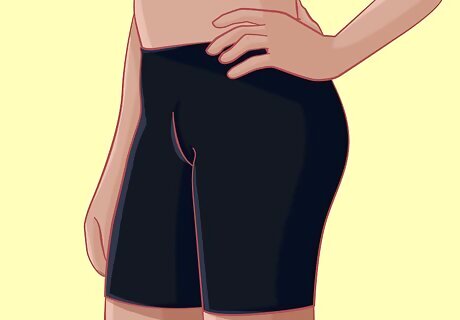
Select a pair of spandex shorts. Spandex will fit snugly to your body and give you the most freedom of movement. Regular gym shorts may be alright, but check with your coach to be sure. Move around in your shorts ahead of time: jog, squat, and lunge. Make sure the shorts do not easily ride up or slide down.
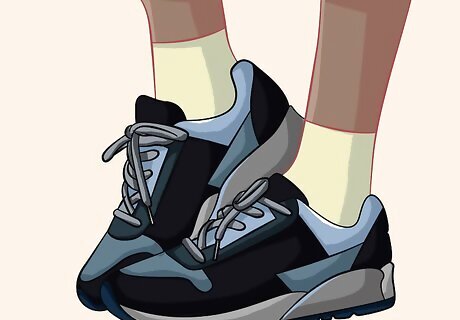
Pick a pair of running shoes. These should lace up, provide good arch support, and not be able to leave any black marks on the gym floor. If you’re serious about playing volleyball long-term, invest in a specialty pair of volleyball shoes. These will weigh less and provide even more support and traction than regular workout shoes. Volleyball shoes can be purchased online or at sporting goods stores, where a sales associate can help you figure out the proper size.
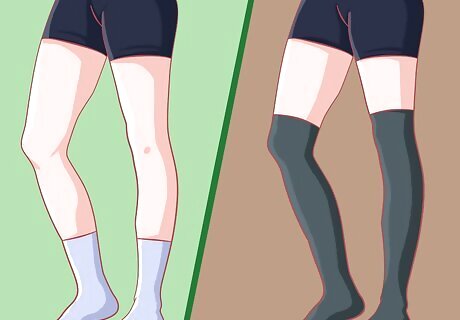
Select crew or knee socks. What type of socks you wear is a personal preference, so choose what feels best to you. Knee socks may offer added protection of the skin on your legs if that’s a concern. Avoid ankle socks, since those can easily slip down into your shoe and distract you as well as cause blisters. Consider socks that offer special features, like moisture control, built-in arch support, cushioning for the ball of your foot, or blister control.
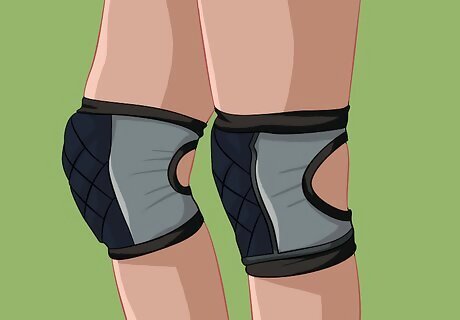
Buy knee pads. You should invest in a pair of knee pads if you’re at all concerned about hurting your knees as you dive for a ball. Visit a sporting goods store to get your knees measured and fitted for the right pair of knee pads.
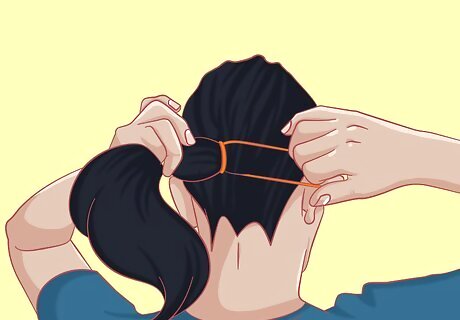
Tie your hair back. Put your hair into a ponytail or braid if it’s long. Try to keep short hair off your face using a headband or hair clips. This applies to bangs as well – pin them back or use hairspray to keep them away from your forehead.
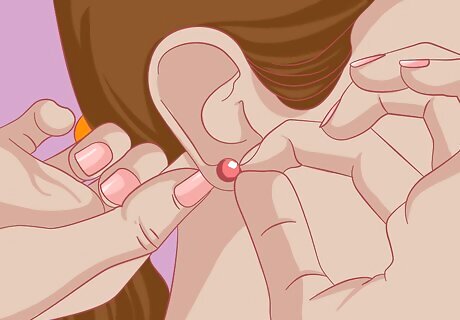
Remove any jewelry. Wearing earrings, necklaces, bracelets, or rings can injure you or someone else on the court. Be sure to take all of those items off beforehand and store them somewhere safe during practice.
Choosing Apparel for Men
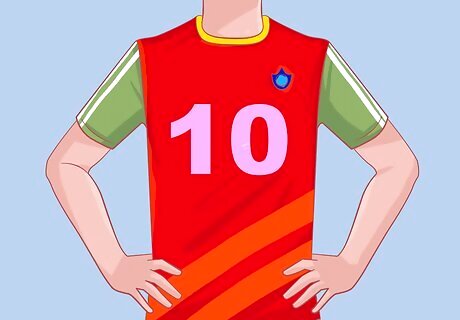
Select a close-fitting shirt. Find a short-sleeved or sleeveless shirt that fits snugly and is comfortable to move in. Choose something made of breathable, synthetic fibers that will wick sweat away from your body.
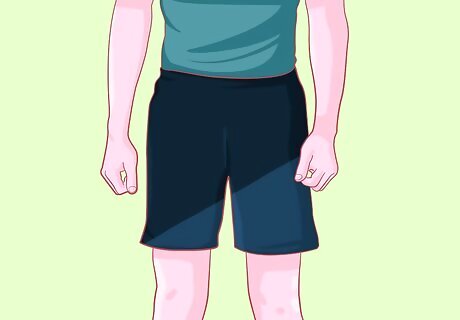
Select close-fitting shorts. Men don’t typically wear spandex shorts as tight or as short as the women do. But your shorts should still be more snug than a normal pair of baggy workout shorts. Choose a pair that will allow you to move around without sagging down.
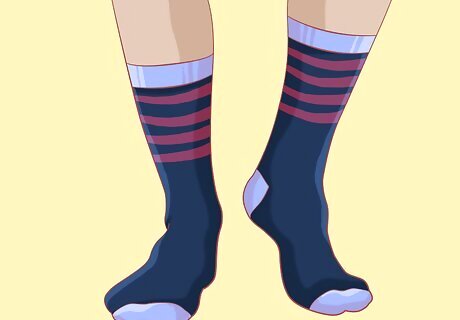
Choose comfortable socks. These can be crew, calf-height, or knee-height, depending on your preference. Avoid socks that are mostly cotton since these will absorb moisture and be slow to dry. Look instead for socks that have acrylic or synthetic fibers and keep your feet dryer to help prevent blisters.
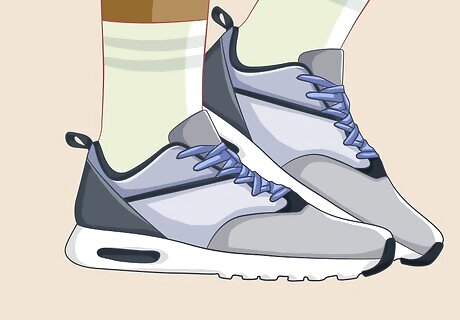
Pick a pair of workout shoes. Unless you’re serious about playing volleyball, you can just start with a good pair of running or gym shoes. Be sure that they fit well, offer good arch support, and won’t leave black marks on the gym floor. If you decide to play volleyball long-term, visit a sporting goods store to get fitted for volleyball shoes, which provide more traction and support than ordinary gym shoes.
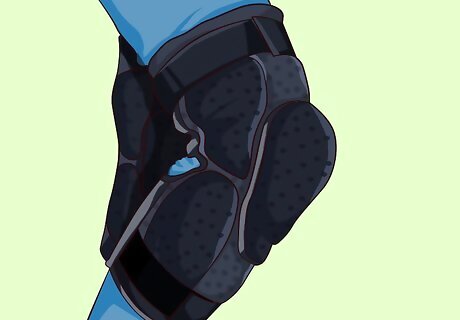
Consider buying knee pads. Many men opt not to wear knee pads, but some do, so decide if knee pads are right for you. They protect your knees from injury and pain when you have to dive for a ball, but some players think they’re uncomfortable and bulky.


















Comments
0 comment